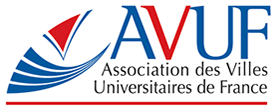
Where does the international EdTech market stand today?
Digital makes up less than 3% of the $5.2 billion education market. Other content industries, such as music, media and books, account for over 35%. There's no reason EdTech couldn't catch up, although education's inherent inertia has slowed its digital transformation.
EdTech received $8 billion in investments in 2015, a twofold increase over 2014. The education market is 57 times the size of the gaming industry yet investment levels are comparable.
What does this say about our priorities?
While the U.S. and Africa are far ahead in terms of investments, the European EdTech market is taking off. It is predicted to grow 20% per year over the next few years and may be worth $120 billion in five years.
Why the lack of investment?
The venture capital model isn't well suited to EdTech. It takes seven or eight years to get a return on investment where it takes five years for other technologies. That is why Europe has so few EdTech funds.
From a macroeconomic point of view, emerging markets are where the EdTech sweet spot lies because they are growing faster. Worldwide, they are home to 50% of people online and 90% of people under the age of 30. China alone accounts for 30 to 40% of EdTech investments and has over a dozen startups valued at over $1 billion, known as unicorns.
Europe's well-established infrastructure impedes the development of new technologies. In countries like France, parents trust schools to provide content. They are wary of innovation when it comes from companies.
What makes the U.S. different?
The strength of the U.S. technology sector is such that teachers get more tools for content creation and evaluation. The higher education market there is very advanced, with MOOC platforms like Coursera and EdX. The U.S. also has one language and one curriculum, whereas Europe has 20.
How about Europe?
EdTech in Europe is more of a rising tide than a tsunami. The market is slow but that creates stability. There is no shortage of success stories or opportunities here.






